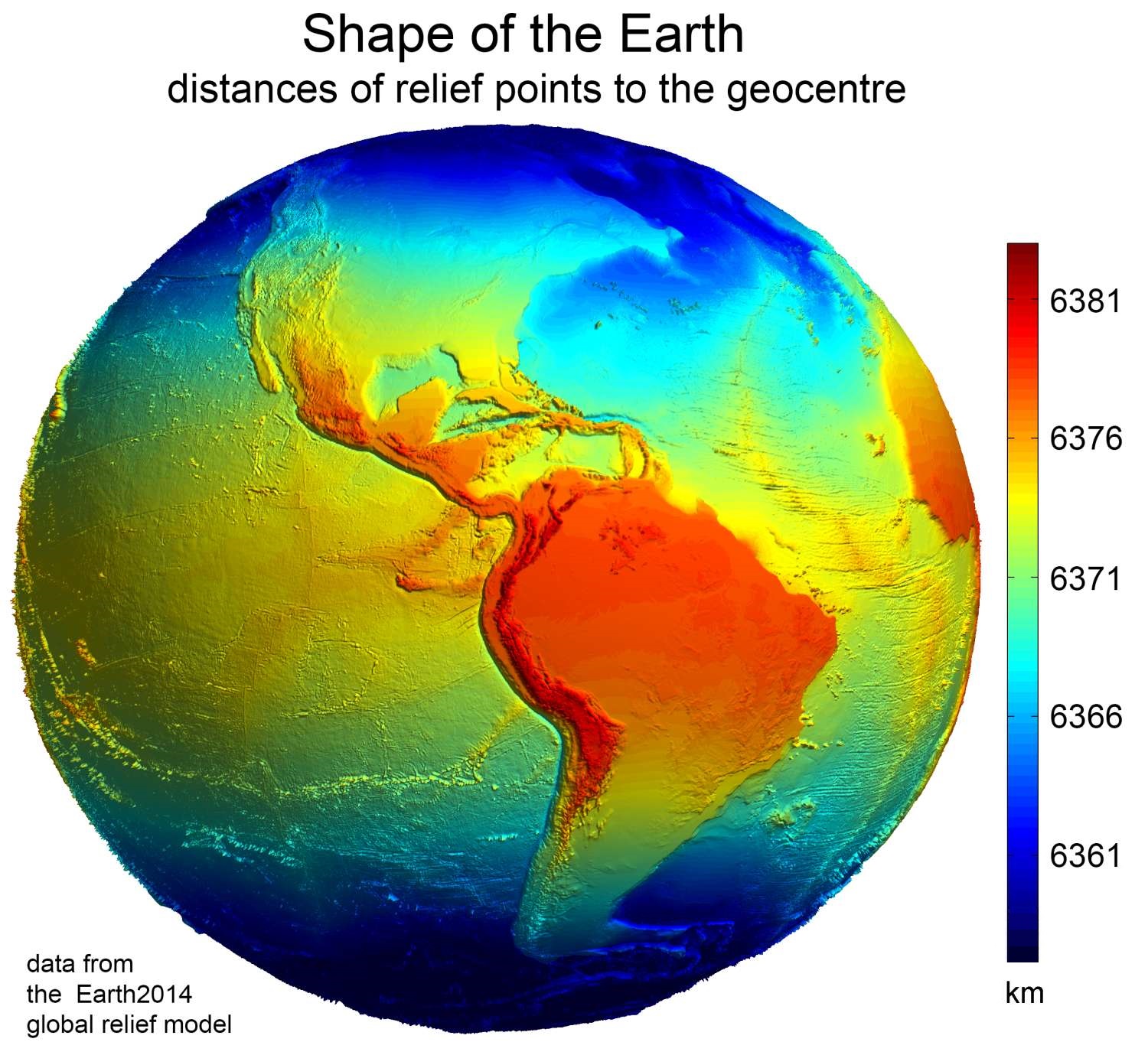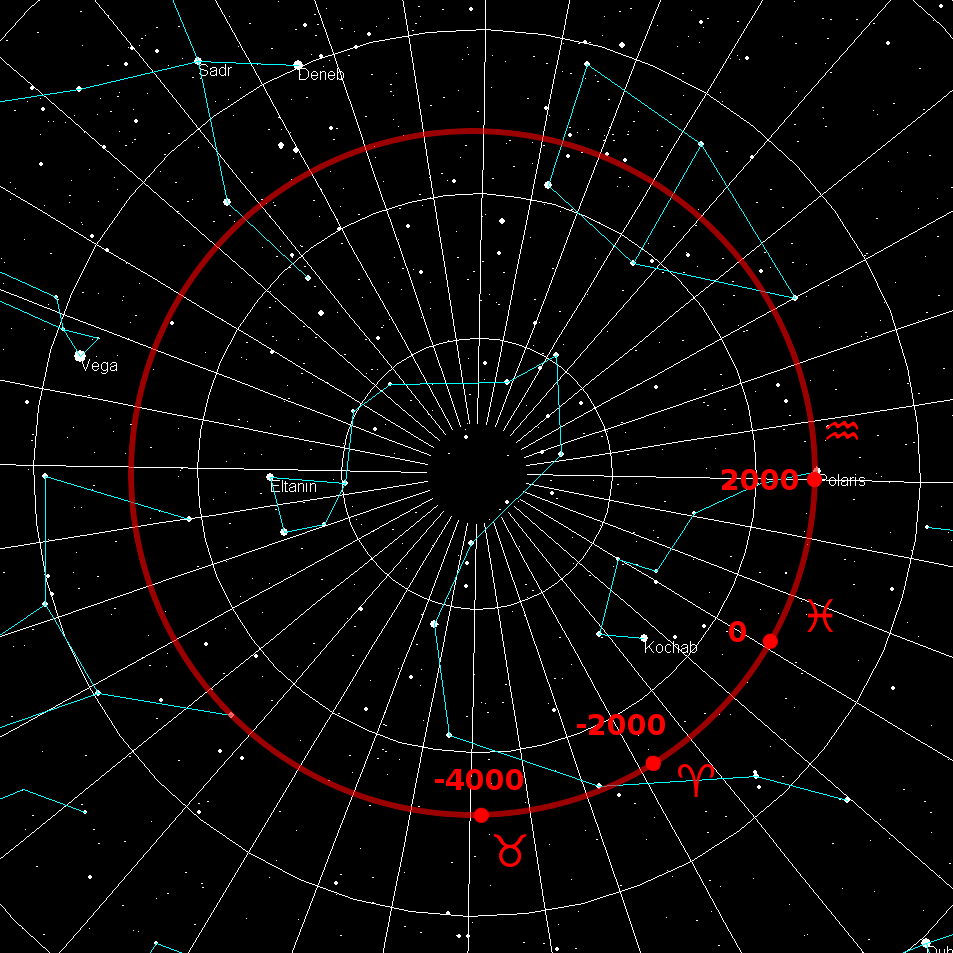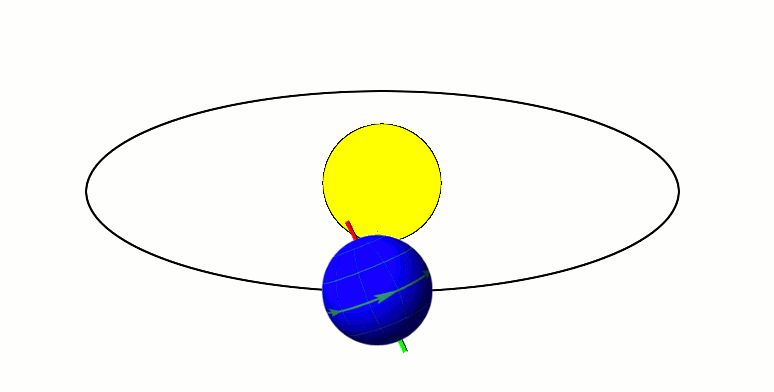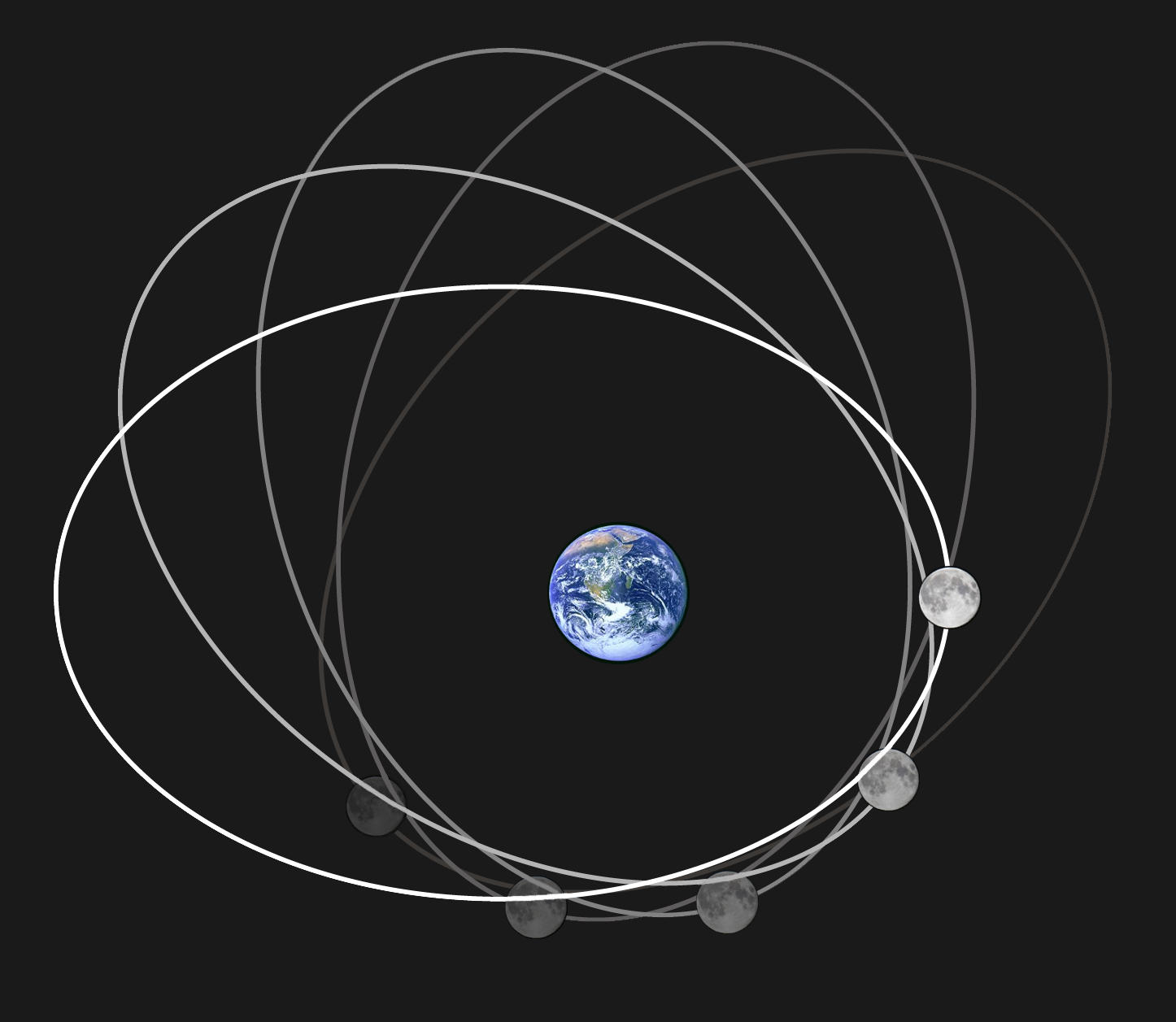|
Astronomical Nutation
Astronomical nutation is a phenomenon which causes the orientation of the axis of rotation of a spinning astronomical object to vary over time. It is caused by the gravitational forces of other nearby bodies acting upon the spinning object. Although they are caused by the same effect operating over different timescales, astronomers usually make a distinction between ''precession'', which is a steady long-term change in the axis of rotation, and ''nutation'', which is the combined effect of similar shorter-term variations. An example of precession and nutation is the variation over time of the orientation of the axis of rotation of the Earth. This is important because the most commonly used frame of reference for measurement of the positions of astronomical objects is the Earth's equator — the so-called equatorial coordinate system. The effect of precession and nutation causes this frame of reference itself to change over time, relative to an arbitrary fixed frame. Nutation is ... [...More Info...] [...Related Items...] OR: [Wikipedia] [Google] [Baidu] |
Rotation
Rotation or rotational/rotary motion is the circular movement of an object around a central line, known as an ''axis of rotation''. A plane figure can rotate in either a clockwise or counterclockwise sense around a perpendicular axis intersecting anywhere inside or outside the figure at a ''center of rotation''. A solid figure has an infinite number of possible axes and angles of rotation, including chaotic rotation (between arbitrary orientation (geometry), orientations), in contrast to rotation around a fixed axis, rotation around a axis. The special case of a rotation with an internal axis passing through the body's own center of mass is known as a spin (or ''autorotation''). In that case, the surface intersection of the internal ''spin axis'' can be called a ''pole''; for example, Earth's rotation defines the geographical poles. A rotation around an axis completely external to the moving body is called a revolution (or ''orbit''), e.g. Earth's orbit around the Sun. The en ... [...More Info...] [...Related Items...] OR: [Wikipedia] [Google] [Baidu] |
Figure Of The Earth
In geodesy, the figure of the Earth is the size and shape used to model planet Earth. The kind of figure depends on application, including the precision needed for the model. A spherical Earth is a well-known historical approximation that is satisfactory for geography, astronomy and many other purposes. Several models with greater accuracy (including ellipsoid) have been developed so that coordinate systems can serve the precise needs of navigation, surveying, cadastre, land use, and various other concerns. Motivation Earth's topographic surface is apparent with its variety of land forms and water areas. This topographic surface is generally the concern of topographers, hydrographers, and geophysicists. While it is the surface on which Earth measurements are made, mathematically modeling it while taking the irregularities into account would be extremely complicated. The Pythagorean concept of a spherical Earth offers a simple surface that is easy to deal with mathem ... [...More Info...] [...Related Items...] OR: [Wikipedia] [Google] [Baidu] |
Spherical Trigonometry
Spherical trigonometry is the branch of spherical geometry that deals with the metrical relationships between the edge (geometry), sides and angles of spherical triangles, traditionally expressed using trigonometric functions. On the sphere, geodesics are great circles. Spherical trigonometry is of great importance for calculations in astronomy, geodesy, and navigation. The origins of spherical trigonometry in Greek mathematics and the major developments in Islamic mathematics are discussed fully in History of trigonometry and Mathematics in medieval Islam. The subject came to fruition in Early Modern times with important developments by John Napier, Jean Baptiste Joseph Delambre, Delambre and others, and attained an essentially complete form by the end of the nineteenth century with the publication of Todhunter's textbook ''Spherical trigonometry for the use of colleges and Schools''. Since then, significant developments have been the application of vector methods, quaternion m ... [...More Info...] [...Related Items...] OR: [Wikipedia] [Google] [Baidu] |
Orbital Node
An orbital node is either of the two points where an orbit intersects a plane of reference to which it is inclined. A non-inclined orbit, which is contained in the reference plane, has no nodes. Planes of reference Common planes of reference include the following: * For a geocentric orbit, Earth's equatorial plane. In this case, non-inclined orbits are called ''equatorial''. * For a heliocentric orbit, the ecliptic or invariable plane. In this case, non-inclined orbits are called ''ecliptic''. * For an orbit outside the Solar System, the plane through the primary perpendicular to a line through the observer and the primary (called the '' plane of the sky''). Node distinction If a reference direction from one side of the plane of reference to the other is defined, the two nodes can be distinguished. For geocentric and heliocentric orbits, the ascending node (or north node) is where the orbiting object moves north through the plane of reference, and the descending node ... [...More Info...] [...Related Items...] OR: [Wikipedia] [Google] [Baidu] |
Ecliptic Coordinate System
In astronomy, the ecliptic coordinate system is a celestial coordinate system commonly used for representing the apparent positions, orbits, and pole orientations of Solar System objects. Because most planets (except Mercury) and many small Solar System bodies have orbits with only slight inclinations to the ecliptic, using it as the fundamental plane is convenient. The system's origin can be the center of either the Sun or Earth, its primary direction is towards the March equinox, and it has a right-hand convention. It may be implemented in spherical or rectangular coordinates. Primary direction The celestial equator and the ecliptic are slowly moving due to perturbing forces on the Earth, therefore the orientation of the primary direction, their intersection at the March equinox, is not quite fixed. A slow motion of Earth's axis, precession, causes a slow, continuous turning of the coordinate system westward about the poles of the ecliptic, completing one circ ... [...More Info...] [...Related Items...] OR: [Wikipedia] [Google] [Baidu] |
Orbital Eccentricity
In astrodynamics, the orbital eccentricity of an astronomical object is a dimensionless parameter that determines the amount by which its orbit around another body deviates from a perfect circle. A value of 0 is a circular orbit, values between 0 and 1 form an elliptic orbit, 1 is a parabolic escape orbit (or capture orbit), and greater than 1 is a hyperbola. The term derives its name from the parameters of conic sections, as every Kepler orbit is a conic section. It is normally used for the isolated two-body problem, but extensions exist for objects following a rosette orbit through the Galaxy. Definition In a two-body problem with inverse-square-law force, every orbit is a Kepler orbit. The eccentricity of this Kepler orbit is a non-negative number that defines its shape. The eccentricity may take the following values: * Circular orbit: * Elliptic orbit: * Parabolic trajectory: * Hyperbolic trajectory: The eccentricity is given by e = \sqrt where ... [...More Info...] [...Related Items...] OR: [Wikipedia] [Google] [Baidu] |
Angular Diameter
The angular diameter, angular size, apparent diameter, or apparent size is an angular separation (in units of angle) describing how large a sphere or circle appears from a given point of view. In the vision sciences, it is called the ''visual angle'', and in optics, it is the ''angular aperture'' (of a lens (optics), lens). The angular diameter can alternatively be thought of as the angular displacement through which an eye or camera must rotate to look from one side of an apparent circle to the opposite side. A person can Angular resolution, resolve with their naked eyes diameters down to about 1 arcminute (approximately 0.017° or 0.0003 radians). This corresponds to 0.3 m at a 1 km distance, or to perceiving Venus as a disk under optimal conditions. Formulation The angular diameter of a circle whose plane is perpendicular to the displacement vector between the point of view and the center of said circle can be calculated using the formula :\delta = 2\arctan ... [...More Info...] [...Related Items...] OR: [Wikipedia] [Google] [Baidu] |
Celestial Pole
The north and south celestial poles are the two points in the sky where Earth's axis of rotation, indefinitely extended, intersects the celestial sphere. The north and south celestial poles appear permanently directly overhead to observers at Earth's North Pole and South Pole, respectively. As Earth spins on its axis, the two celestial poles remain fixed in the sky, and all other celestial points appear to rotate around them, completing one circuit per day (strictly, per sidereal day). The celestial poles are also the poles of the celestial equatorial coordinate system, meaning they have declinations of +90 degrees and −90 degrees (for the north and south celestial poles, respectively). Despite their apparently fixed positions, the celestial poles in the long term do not actually remain permanently fixed against the background of the stars. Because of a phenomenon known as the precession of the equinoxes, the poles trace out circles on the celestial sphere, with a period ... [...More Info...] [...Related Items...] OR: [Wikipedia] [Google] [Baidu] |
Obliquity Of The Ecliptic
In astronomy, axial tilt, also known as obliquity, is the angle between an object's rotational axis and its orbital axis, which is the line perpendicular to its orbital plane; equivalently, it is the angle between its equatorial plane and orbital plane. It differs from orbital inclination. At an obliquity of 0 degrees, the two axes point in the same direction; that is, the rotational axis is perpendicular to the orbital plane. The rotational axis of Earth, for example, is the imaginary line that passes through both the North Pole and South Pole, whereas the Earth's orbital axis is the line perpendicular to the imaginary plane through which the Earth moves as it revolves around the Sun; the Earth's obliquity or axial tilt is the angle between these two lines. Over the course of an orbital period, the obliquity usually does not change considerably, and the orientation of the axis remains the same relative to the background of stars. This causes one pole to be pointed more to ... [...More Info...] [...Related Items...] OR: [Wikipedia] [Google] [Baidu] |
Saros (astronomy)
The saros () is a period of exactly 223 synodic months, 18 years 11 days and 8 hours, that can be used to predict eclipses of the solar eclipse, Sun and lunar eclipse, Moon. One saros period after an eclipse, the Sun, Earth, and Moon return to approximately the same relative geometry, a near straight line, and a nearly identical eclipse will occur, in what is referred to as an eclipse cycle. Every eclipse has an associated saros series and all succeeding or preceding eclipses have a different saros series associated with them - as the eclipse of the same series occurs or occurred with a gap of one saros only. Solar and lunar eclipses have different saros series. A series of eclipses that are separated by one saros is called a ''saros series''. It corresponds to: *6,585.321347 solar days *18.029 years *223 synodic months *241.999 draconic months *18.999 eclipse years (38 eclipse seasons of 173.31 days) *238.992 anomalistic months *241.029 sidereal months The 19 eclipse years means ... [...More Info...] [...Related Items...] OR: [Wikipedia] [Google] [Baidu] |
Ecliptic
The ecliptic or ecliptic plane is the orbital plane of Earth's orbit, Earth around the Sun. It was a central concept in a number of ancient sciences, providing the framework for key measurements in astronomy, astrology and calendar-making. From the perspective of an observer on Earth, the Sun's movement around the celestial sphere over the course of a year traces out a path along the ecliptic against the fixed stars, background of stars – specifically the Zodiac constellations. The planets of the Solar System can also be seen along the ecliptic, because their orbital planes are very close to Earth's. The Moon's orbital plane is also similar to Earth's; the ecliptic is so named because the ancients noted that eclipses only occur when the Moon is crossing it. The ecliptic is an important Plane of reference, reference plane and is the basis of the ecliptic coordinate system. Ancient scientists were able to calculate Earth's axial tilt by comparing the ecliptic plane to that of ... [...More Info...] [...Related Items...] OR: [Wikipedia] [Google] [Baidu] |
Orbit Of The Moon
The Moon orbits Earth in the retrograde and prograde motion, prograde direction and completes one orbital period, revolution relative to the March Equinox, Vernal Equinox and the fixed stars in about 27.3 days (a tropical month and sidereal month), and one revolution relative to the Sun in about 29.5 days (a synodic month). On average, the lunar distance, distance to the Moon is about from Earth's centre, which corresponds to about 60 Earth radii or 1.28 light-seconds. Earth and the Moon orbit about their barycentre (common centre of mass), which lies about from Earth's centre (about 73% of its radius), forming a satellite system called the Earth–Moon system. With a mean orbital speed around the barycentre of , the Moon covers a distance of approximately its diameter, or about half a degree on the celestial sphere, each hour. The Moon differs from most Regular moon, regular satellites of other planets in that its orbital plane (astronomy), orbital plane is closer to the ec ... [...More Info...] [...Related Items...] OR: [Wikipedia] [Google] [Baidu] |









